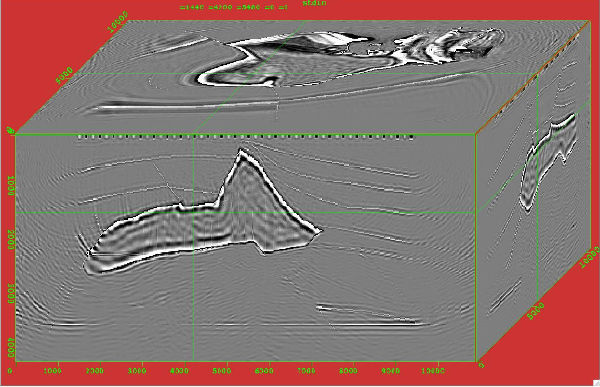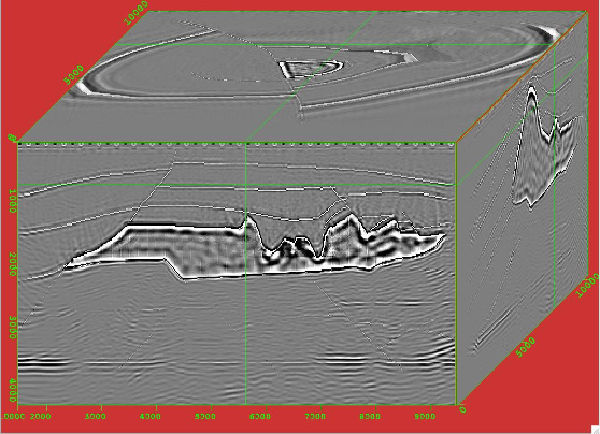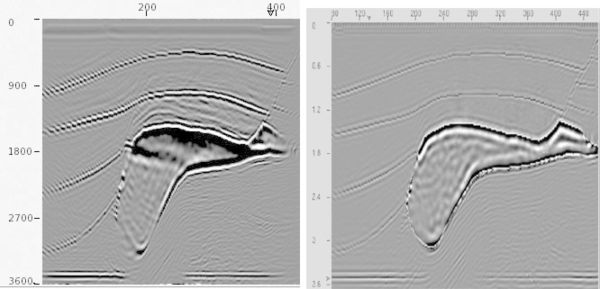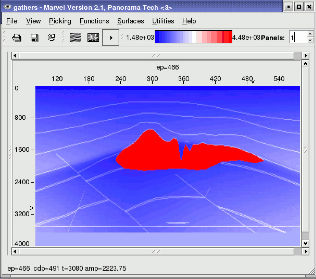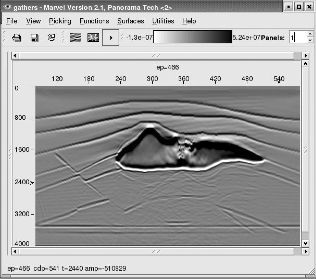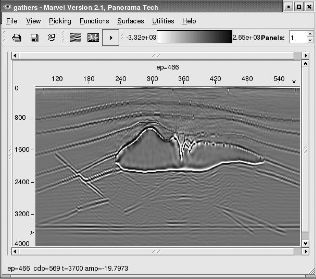SEG/EAGE C3-NA Data Imaging
In this section, we consider the question of why imaging below salt for the C3-NA data set is so difficult
The two-way migration of the SEG/EAGE salt data represented in Figure 13(a) and (b) is quite good and compares favorably with the one-way migration in the left hand side of Figure 13(c). However, it is quite clear that, in spite of the excellent imaging, neither method provides a satisfactory image below salt.
(a)
A
3D
two-way
image
(c)
A
comparison
one-way
and
two-way
on
Line
289
|
Figure 14 shows the result of proper data acquisition. The model in part (a) was used to synthesize densely spaced shots with apertures that covered the entire model. These data were then migrated to produce the image in parts (b) and (c). The graphic in part (b) of this figure is an excellent image of the sub salt reflectors. The same is true for the two-way image in part (c). The only possible conclusion is that proper acquisition is required for optimum imaging.
- Introduction
- Seismic Modeling
- History
- Zero Offset Migration Algorithms
- Exploding Reflector Examples
- Prestack Migration
- Prestack Migration Examples
- Common Azimuth on the SEG/EAGE C3-NA Synthetic
- Kirchhoff versus One-Way on a Gulf of Mexico 2D Salt Synthetic
- A North Sea Sill Synthetic
- Marmousi Case Study
- An Imaging Note and the BP 2.5 Dimensional Data
- BP 2.5 D Data
- BP 2004 Salt Structure Data
- SEG AA' Data Set
- Migration from Topography
- The SMAART JV Sigsbee Model
- SMAART JV Pluto Data Set
- SEG/EAGE C3-NA Data Imaging
- Anisotropic Earth Models
- Data Acquisition
- Migration Summary
- Isotropic Velocity Analysis
- Anisotropic Velocity Analysis
- Case Studies
- Course Summary
